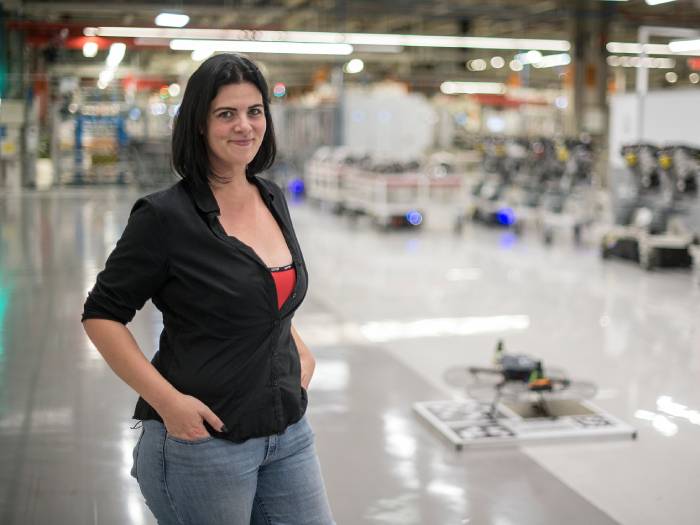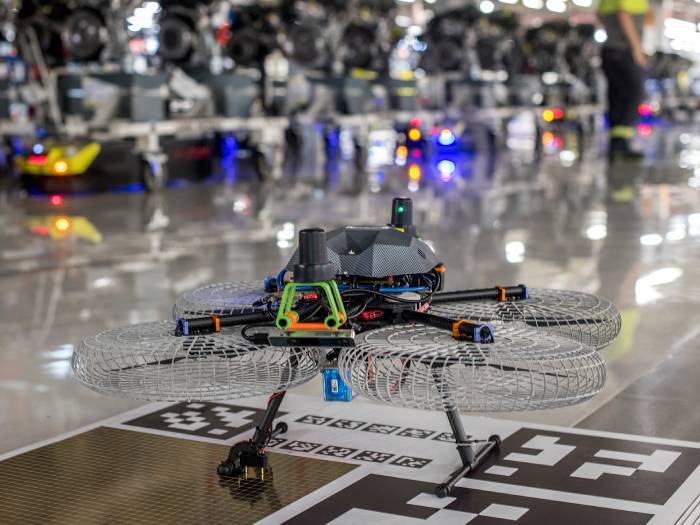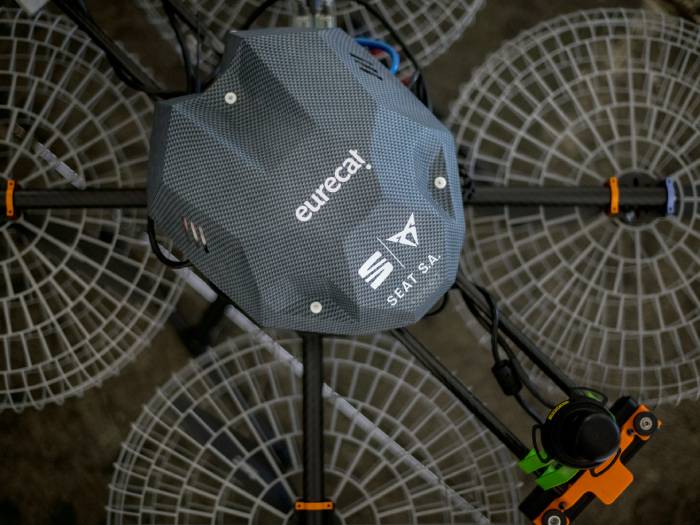Autonomous drones on the production line at Martorell smart factory
The development of electric mobility and innovations in industrial transformation go hand in hand. SEAT and Eurecat are testing the use of autonomous drones to transport components within the production line.

The transition to e-mobility requires an all-round industrial transformation, and innovation is key in this process. A good example is the drone that flies above the production lines of Workshop 9 in Martorell. This is a cutting-edge project, currently in the testing phase, which aims to explore the possibilities of using drones in logistics and is the result of collaboration between SEAT S.A. and Eurecat, the Technology Centre of Catalonia.
"We want to understand the advantages of autonomous vertical mobility, to clear up space on the floor and shift light-weight parts in a faster, cleaner and more efficient way. In the near future, drones could transport autonomously parts directly to the line," explains Alba Gavilán, Head of Digital Execution & Delivery within the Production Strategy division.
Pilot Phase
The project is currently in the pilot phase, but is designed to be applied to an entire fleet of drones programmed to fly autonomously, without the need of a remote control. The drones have a system of sensors that can detect the features on the shop floor.
"The mapping of the plant is very important, as is the programming and all the hours of testing, which are also carried out by inserting some obstacles, to train the drones for any kind of situation." The project started in 2019, and has already logged more than 1,500 hours of work, even during the COVID-19 pandemic
All autonomous robots
The SEAT Martorell plant is already home to other groups of robots that move independently within the departments: the AGVs (automated guided vehicles), the AMRs (autonomous mobile robots) and the drones that fly in the outdoor areas. The team working on the drones, called SEAT S.A. Squadrone, considering their experience in outdoor operations realised that they could improve the plant's logistics by exploiting the technology in the indoor space as well.
"The advantage of drones is that have unhindered vertical movement, which will greatly facilitate the transport of parts and complement the function that the AGVs perform on the ground," adds Gavilán.
A future of integration

According to Jorge Luis Martínez, Head of Logistics Innovations at SEAT S.A., the future will see an integration of the company’s current outdoor drones with the indoor drones to improve parts transportation both inside and outside the workshop. "We could connect nearby suppliers with the factory, extending their supply line directly to the production line and without having to rely on warehousing options for certain electric car components in the future” he explains.
"This project is an example of collaboration that operationalises our knowledge transfer on smart drones to industrial applications at SEAT S.A." adds Daniel Serrano, Director of the Robotics and Automation Unit at Eurecat. "It’s a revolution in the logistics paradigm to prepare us for the electric mobility" concludes Martínez.
Innovation Day

The “Indoor: Autonomous Flying Platform” project is one of the initiatives presented at the third edition of the SEAT Innovation Day, which took place on 27 and 28 October at the Martorell plant. An event that promotes and enhances innovation among the company's employees, who presented more than 25 projects during the event. Among the most interesting were an augmented reality software, a system for testing simulations of the safety protocol for autonomous driving and an electric racing car designed and manufactured by university students.
Fonte: SEAT S.A.
VGI | Responsible OU: VP | Creation date: article date | Class 9.1
